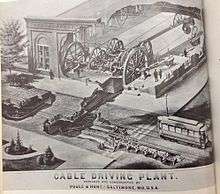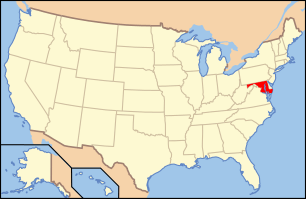Baltimore City Passenger Railway Power House and Car Barn
|
Baltimore City Passenger Railway Power House and Car Barn | |
|
The Charles Theatre | |
   | |
| Location | 1711-1717 N. Charles St., Baltimore, Maryland |
|---|---|
| Coordinates | 39°18′33″N 76°36′59″W / 39.30917°N 76.61639°WCoordinates: 39°18′33″N 76°36′59″W / 39.30917°N 76.61639°W |
| Area | less than one acre |
| Built | 1892 |
| Architectural style | Romanesque |
| NRHP Reference # | 98001156[1] |
| Added to NRHP | September 9, 1998 |

Baltimore City Passenger Railway Power House and Car Barn, also known as the Charles Theatre, is a historic street railway building located at Baltimore, Maryland, United States. It is a two-story brick Romanesque Revival style building, constructed in 1892, that has been altered for a variety of uses over the years. The southern half of the building (now the Charles Theater) was used for the power house; the northern half (formerly the Famous Ballroom and a bowling alley) was used for the car barn. It was constructed by Baltimore’s oldest streetcar company to provide cable traction on one of its first and most important lines. The car barn was the node where the Baltimore & Northern Railway transferred its streetcars to City Passenger tracks. In 1939 the United Railways and Electric Company sold the structure and it was then converted into a theater, bowling alley, and ballroom.[4]
Baltimore City Passenger Railway Power House and Car Barn was listed on the National Register of Historic Places in 1998.[1]
See also
References
- 1 2 National Park Service (2010-07-09). "National Register Information System". National Register of Historic Places. National Park Service.
- ↑ Hilton, George W. (1971). The Cable Car in America. Berkeley, CA.: Howell NorthBooks. p. 128.
- ↑ "The Cable in Chicago: Speeding along the Streets Rapid Transit there for Miles". The Baltimore Sun. November 9, 1889. p. 8.
- ↑ Betty Bird (April 1998). "National Register of Historic Places Registration: Baltimore City Passenger Railway Power House and Car Barn" (PDF). Maryland Historical Trust. Retrieved 2016-03-01.
External links
- Baltimore City Passenger Railway Power House and Car Barn, Baltimore City, including photo from 1998, at Maryland Historical Trust
- The Charles Theater website


